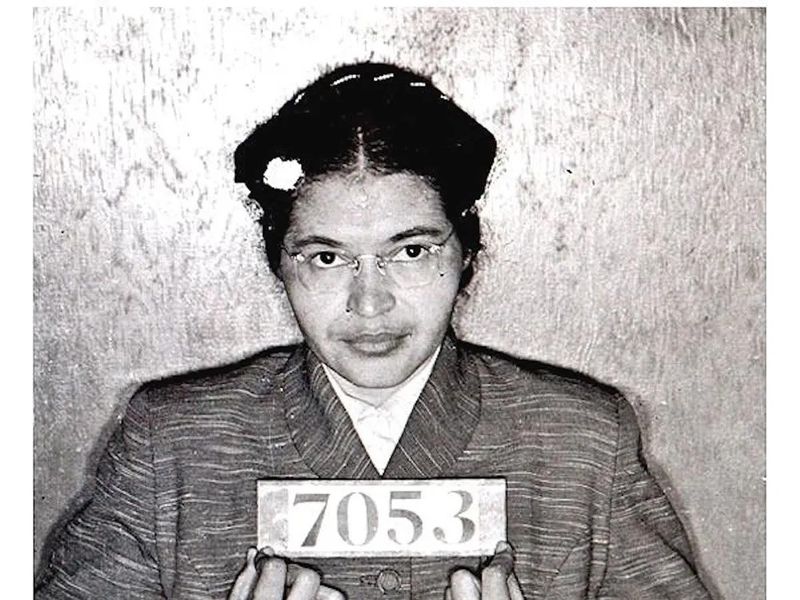
This logo isn't an ad or affiliate link. It's an organization that shares in our mission, and empowered the authors to share their insights in Byte form.
Rumie vets Bytes for compliance with our
Standards.
The organization is responsible for the completeness and reliability of the content.
Learn more
about how Rumie works with partners.
What do Rosa Parks and Martin Luther King Jr. have in common?
They were both leaders in the Civil Rights Movement who fought for injustice against Black people in the 1950s and were a part of the Montgomery Bus Boycott.
Known as "the mother of the civil rights movement", Rosa Parks is an inspiration for many, including women and civil rights activists.
Her legacy lives on, with her courageous spirit and unwavering purpose laying the foundation for social activism even today.
Who is Rosa Parks?
Rosa Louise McCauley Parks was born on February 4, 1913, into an African-American family in Tuskegee, Alabama. Rosa and her younger brother were raised in Pine Level, by her mother and maternal grandparents, after her parents separated.
She holds an "iconic status in the civil rights movement." On December 1, 1955, at the age of 42, Parks refused to give up her seat on a bus to a White man in Montgomery, Alabama.
At the time, Jim Crow laws enforced racial segregation in the South, including on public transportation. Black passengers were required to sit in designated sections at the back of the bus, while White passengers occupied the front.
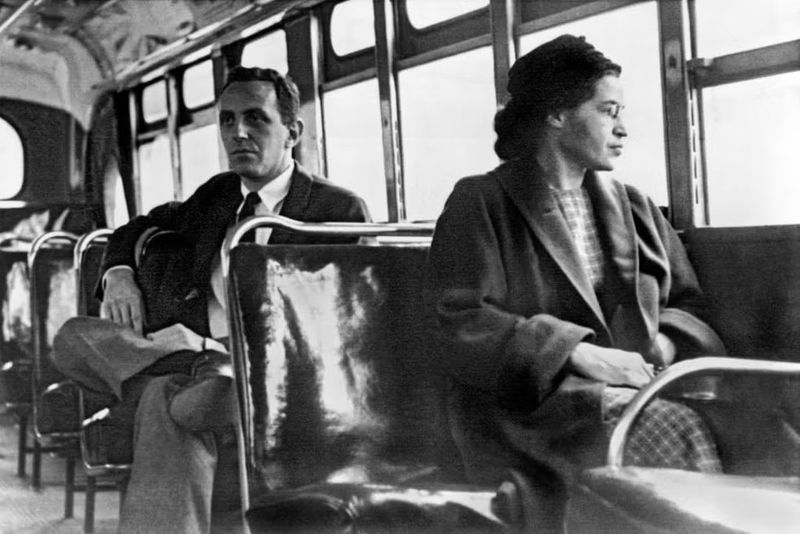 Rosa Parks seated toward the front of an integrated bus in Montgomery, Alabama, in 1956 (image courtesy of Wikimedia Commons)
Rosa Parks seated toward the front of an integrated bus in Montgomery, Alabama, in 1956 (image courtesy of Wikimedia Commons)
I was not tired physically, or no more tired than I usually was at the end of a working day. I was not old, although some people have an image of me as being old then. I was 42. No, the only tired I was, was tired of giving in.
— Rosa Parks
Parks' silent act of defiance was impactful. It led to her arrest and sparked the Montgomery Bus Boycott.
Quiz
Which of the following represent the effects of Jim Crow laws on Black people? Select all that apply:
The Jim Crow system reflected the racist belief that White people were superior to Black people in all important ways, including but not limited to intelligence, morality, and civilized behavior. If a Black person shook hands with a White person, they would have been considered equals, defying the Jim Crow laws.
Did you know?
The mistreatment of another Black woman, Claudette Colvin for refusing to give up her seat, as well as racial atrocities like the lynching death of 14-year-old Emmett Till earlier that summer, contributed to the historical events that led Rosa Parks to protest.
What's the story of The Montgomery Bus Boycott?
On the evening of December 1, 1955, Rosa Parks boarded bus #2857 assigned to the Cleveland Avenue route in Montgomery, Alabama.
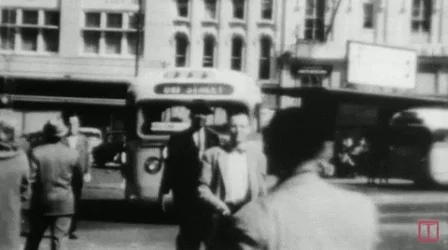
She sat near the middle, right behind the "White" section. As more passengers boarded, and no more seats were left in the White section, the agitated bus driver asked, “Are you going to stand up?” while pointing at her. Sitting fearless and with courage Parks replied, “No."
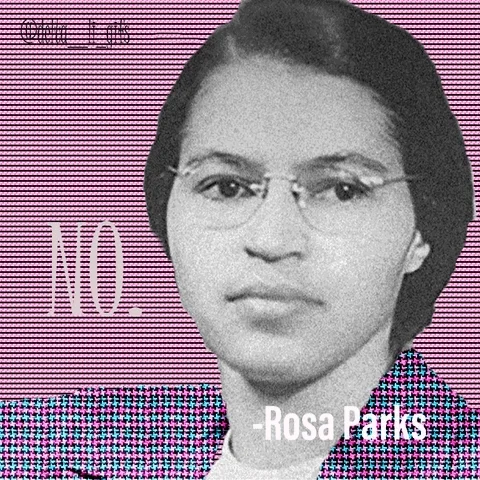
“As I sat there, I tried not to think about what might happen,” she wrote in herautobiography. She was then arrested for violating the laws of segregation.
The Bus Boycott
Rosa's act of defiance "sparked a successful bus boycott" in the city. Many Montgomery residents rode in black-owned cabs or walked instead of taking city buses. The bus company's profits took a huge dip as its busses sat idle. Martin Luther King Jr., who had recently moved to Montgomery, led the thirteen-month-long boycott.
Segregation on public buses would later end in 1956 after the US Supreme Court struck it down in Browder vs. Gayle.
What shaped Rosa's personality?
She learned to be courageous at a young age.
Rosa grew up with grandparents who experienced slavery. While many Black families in the 1900s felt they couldn't do much about Jim Crow laws, her grandparents taught her to stand up for racial equality.
Rosa's mother emphasized reading and learning early on, which laid the foundation for Rosa's intellectual development and future activism.
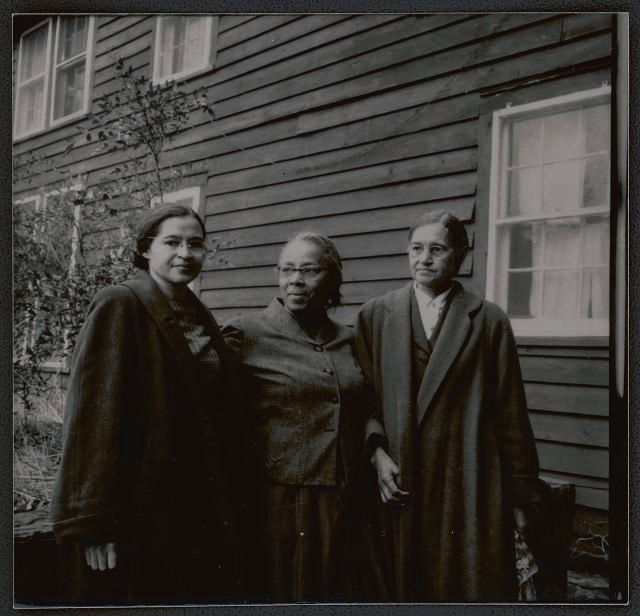 Rosa Parks with her mother, Ms. Leona E. McCauley, and Mrs. Septima P. Clark (image courtesy of Library of Congress)
Rosa Parks with her mother, Ms. Leona E. McCauley, and Mrs. Septima P. Clark (image courtesy of Library of Congress)
She fought against the mistreatment of Black people.
Rosa Parks married Raymond Parks in 1932. He encouraged her to finish her high school diploma and, like him, become an active member of the National Association for the Advancement of Colored People (NAACP).
Soon after she became the secretary of the NAACP Montgomery chapter and worked with E.D. Nixon to protect Black people from wrongful accusations and provide legal representation.
What has Rosa Parks taught us?
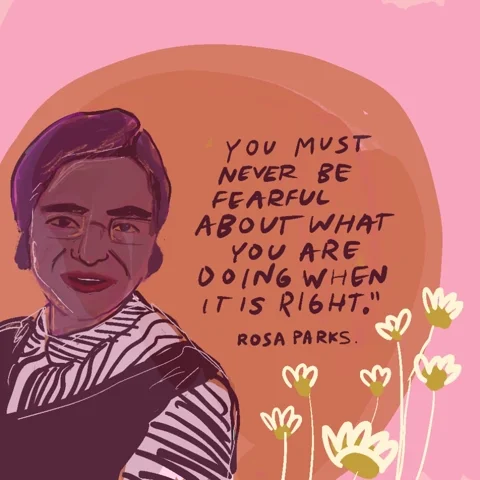
1. It takes uncommon courage to stand up for what's right.
Rosa Parks demonstrated that a small act of defiance can spark a significant change. Standing up for what's right can transform societies, even in the face of adversity. Her refusal to give up her seat was an act of bravery that magnified into a movement.
An example from recent times is the Black Lives Matter (BLM) movement, which began in 2013 and gained significant momentum after George Floyd's death in 2020. Black women such as Patrisse Cullors, Alicia Garza, and Opal Tometi — the founders of the movement — have demonstrated remarkable bravery in advocating for global systemic change.
2. There is power in nonviolence.
Parks chose a powerful strategy of nonviolent resistance to challenge racial segregation. By maintaining dignity and composure, she was able to create an impactful momentum for the Civil Rights Movement. Nonviolent resistance attracts people of all abilities. When you see others participating in nonviolence, it creates "a powerful feeling of solidarity."
A great example is when in 2020, Colin Kaepernick kneeled during the singing of the national anthem and silently protested police brutality during the NFL game.
3. The impact of ordinary people is underestimated.
Rosa Parks wasn't a famous leader when she made her stand. She represents the power of peaceful resistance and the strength of everyday individuals to effect change, reminding us that we all can make a difference.
After the mass shooting at a high school in Parkland, Florida, a group of student survivors, such as X González and Emma González, leveraged their platform to advocate for legal reforms aimed at safeguarding all communities, particularly Black and Brown communities that are disproportionately impacted by gun violence.
Take Action
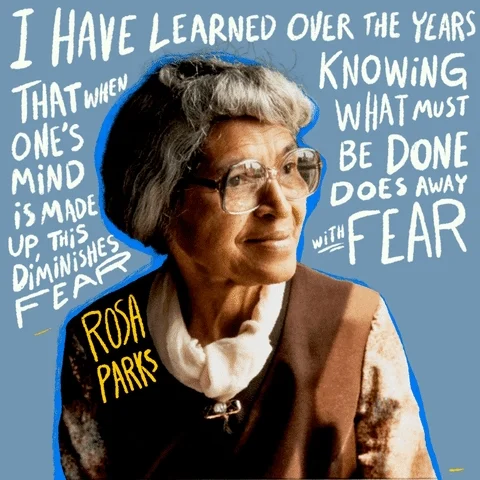
Honoring the legacy of Rosa Parks who made a historical impact on the lives of Black people, here's what you could do:
This Byte has been authored by
Mehak Jain
UX Researcher and Designer

